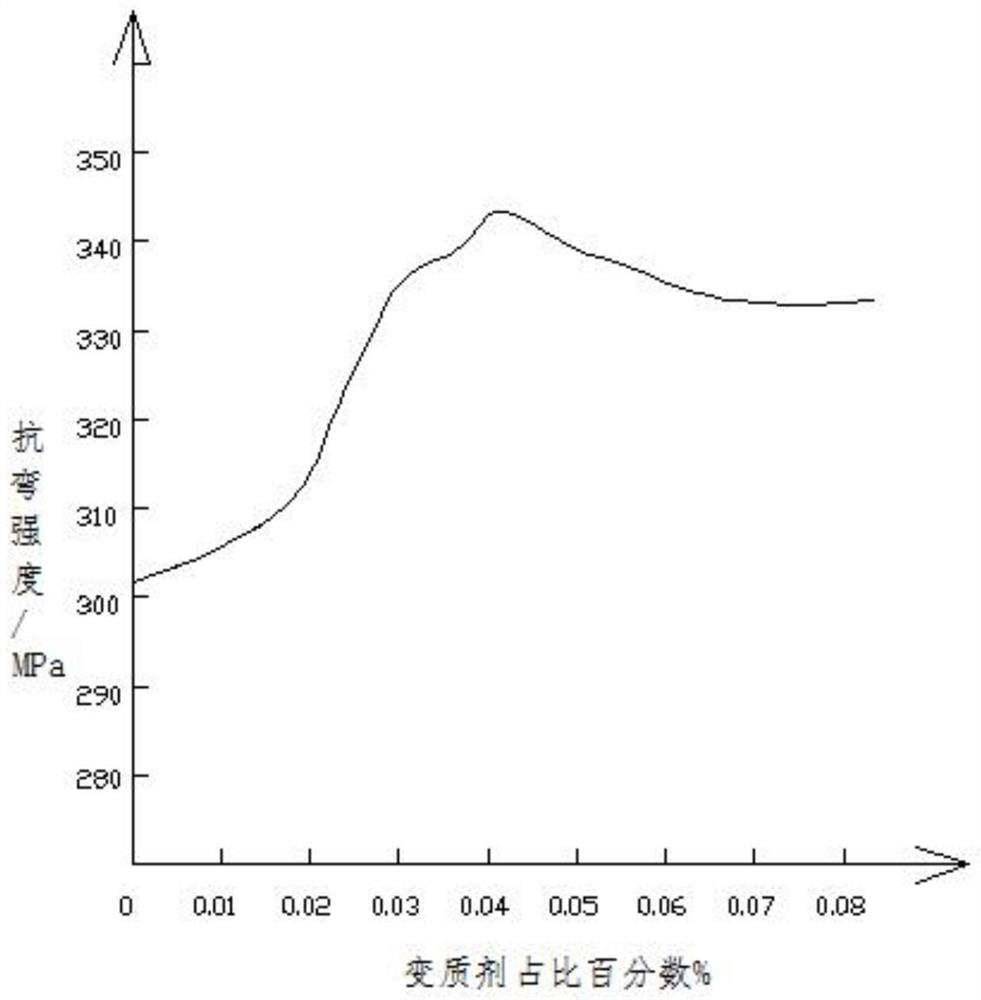A metal aerosol can
An aerosol can and metal technology, applied in the direction of liquid distribution, etc., can solve problems such as general performance, and achieve the effects of improving mechanical properties, reducing section sensitivity, and improving service life
- Summary
- Abstract
- Description
- Claims
- Application Information
AI Technical Summary
Problems solved by technology
Method used
Image
Examples
Embodiment 2
[0040]Embodiment 2: A metal aerosol can made from the following components: iron, ferrosilicon, copper ingot, zinc ingot, scrap steel, ferromanganese, ferrochromium, ferromolybdenum, ferrozirconium; the mass ratio of manganese to zirconium 1:1.
[0041] The molybdenum and silicon mass ratio is 1:10.
[0042] The mass percentages of the components of the metal aerosol can are: carbon: 3.82%, molybdenum: 0.05%, manganese: 0.45%, chromium: 4%, zirconium: 0.45%, silicon: 0.5%, zinc: 1.3%, copper: 0.56%, S < 0.02%, P < 0.02%, and the rest is Fe.
[0043] The raw materials are smelted to obtain molten iron; the austenitizing temperature is 995° C., and the austenitizing time is 3.5 hours; and the tapping temperature of the molten iron is guaranteed to be 1515° C.
[0044] The molten iron undergoes metamorphic treatment; the metamorphic treatment is as follows: adjusting the temperature of the molten iron to 1550° C., then adding a modifying agent to the molten iron, and then stirr...
Embodiment 3
[0049] Embodiment 3: a metal aerosol can, made of the following components: iron, ferrosilicon, copper block, zinc block, scrap steel, ferromanganese, ferrochromium, ferromolybdenum, ferrozirconium; each element mass ratio percentage is: Carbon: 4.15%, Mo: 0.05%, Manganese: 0.56%, Chromium: 4.2%, Zirconium: 0.56%, Silicon: 0.5%, Zinc: 1.33%, Copper: 0.61%, Vanadium 0.025%, S<0.02%, P <0.02%, the rest is Fe.
[0050] The mass ratio of manganese to zirconium is 1:1.
[0051] The molybdenum and silicon mass ratio is 1:10.
[0052] The raw materials are smelted to obtain molten iron; the austenitizing temperature is 995°C, and the austenitizing time is 3.5 hours;
[0053] Ensure that the molten iron temperature is 1515 ℃.
[0054] The molten iron undergoes metamorphic treatment; the metamorphic treatment is as follows: adjusting the temperature of the molten iron to 1550° C., then adding a modifying agent to the molten iron, and then stirring the molten iron for 5 minutes.
[...
Embodiment 4
[0059] Embodiment 4: a metal aerosol can, made of the following components: iron, ferrosilicon, copper block, zinc block, scrap steel, ferromanganese, ferrochromium, ferromolybdenum, ferrozirconium; each element mass ratio percentage is: Carbon: 4.31%, Mo: 0.055%, Manganese: 0.55%, Chromium: 4.2%, Zirconium: 0.65%, Silicon: 0.65%, Zinc: 1.4%, Copper: 0.72%, Vanadium 0.035%, S<0.02%, P <0.02%, the rest is Fe.
[0060] The mass ratio of manganese to zirconium is 1:1.
[0061] The molybdenum and silicon mass ratio is 1:10.
[0062] The raw materials are smelted to obtain molten iron; the austenitizing temperature is 995° C., and the austenitizing time is 3.5 hours; and the tapping temperature of the molten iron is guaranteed to be 1515° C.
[0063] The molten iron undergoes metamorphic treatment; the metamorphic treatment is as follows: adjusting the temperature of the molten iron to 1550° C., then adding a modifying agent to the molten iron, and then stirring the molten iron f...
PUM
| Property | Measurement | Unit |
|---|---|---|
| Granularity | aaaaa | aaaaa |
Abstract
Description
Claims
Application Information
 Login to View More
Login to View More - R&D
- Intellectual Property
- Life Sciences
- Materials
- Tech Scout
- Unparalleled Data Quality
- Higher Quality Content
- 60% Fewer Hallucinations
Browse by: Latest US Patents, China's latest patents, Technical Efficacy Thesaurus, Application Domain, Technology Topic, Popular Technical Reports.
© 2025 PatSnap. All rights reserved.Legal|Privacy policy|Modern Slavery Act Transparency Statement|Sitemap|About US| Contact US: help@patsnap.com

